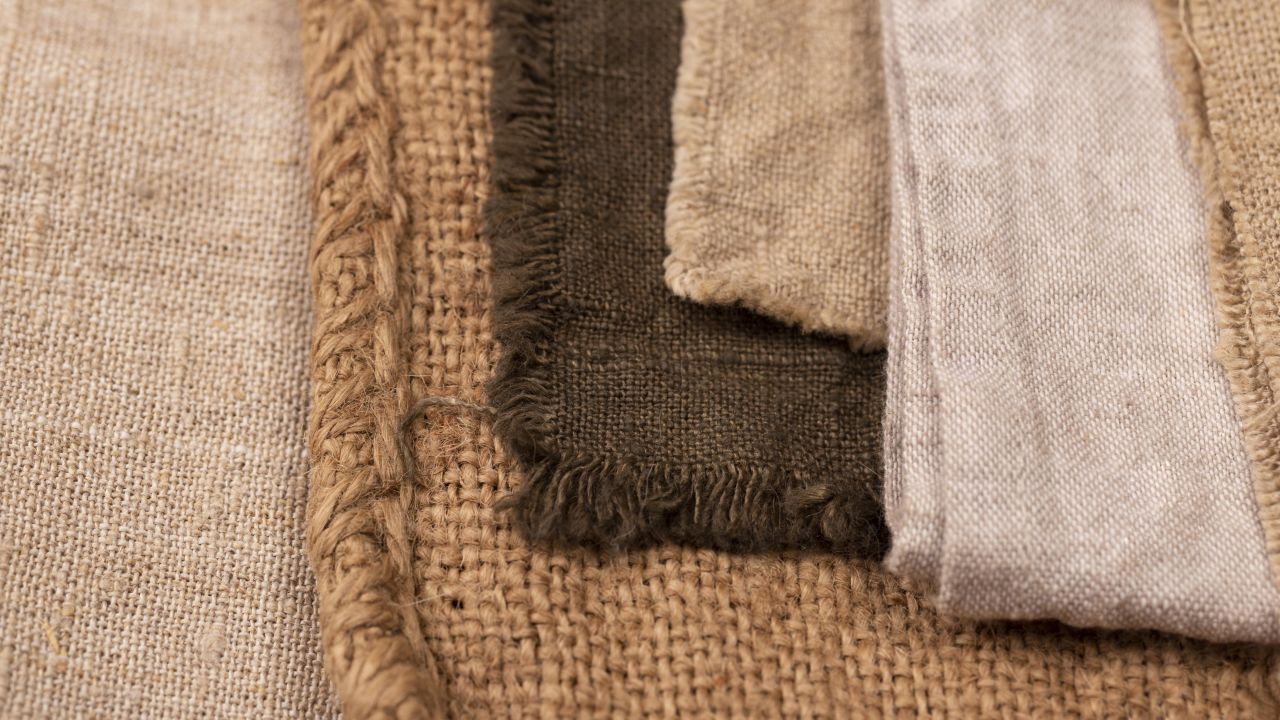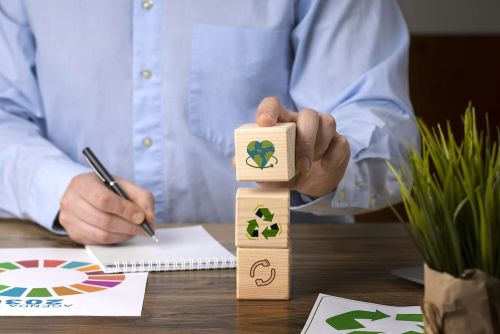Sustainable Fashion: History, Technology, Economics, and Policy Insights


Cut through the green tape
We don't push agendas. At Net Zero Compare, we cut through the hype and fear to deliver the straightforward facts you need for making informed decisions on green products and services. Whether motivated by compliance, customer demands, or a real passion for the environment, you’re welcome here. We provide reliable information—why you seek it is not our concern.
The history
Early Beginnings: Pre-1960s
Before the 1960s, fashion sustainability wasn’t a recognized concept, but practices that would later be identified as sustainable were common. Clothing was made to last, often hand-made or tailored, and people typically owned fewer garments, which were often mended or repurposed.
1960s-1970s: The Rise of Environmental Awareness
The environmental movement of the 1960s and 1970s laid the groundwork for sustainable fashion. The publication of Rachel Carson's "Silent Spring" in 1962 raised awareness about the environmental impact of industrial practices, including those in the textile industry.
Key Milestone: Earth Day (1970)
The first Earth Day in 1970 marked a significant moment in environmental consciousness, leading to increased public scrutiny of pollution, including the waste and toxins generated by the fashion industry.Pioneers: Patagonia and Esprit
Two of the earliest companies to embrace environmental responsibility were Patagonia and Esprit. Patagonia, founded in 1973 by Yvon Chouinard, focused on producing durable, long-lasting outdoor clothing. By the late 1980s, Patagonia started to explore the use of organic cotton and recycled materials, setting a precedent for the industry. Esprit, led by Susie Tompkins Buell and Doug Tompkins, also began integrating environmental concerns into their business practices, promoting the idea of "eco-friendly fashion."
1980s-1990s: The Concept of Ethical Fashion Emerges
During the 1980s and 1990s, the concept of ethical fashion began to take shape, addressing not just environmental issues but also labour conditions in the fashion industry.
Key Milestone: The Green Consumer Guide (1988)
This book by John Elkington and Julia Hailes brought sustainable consumption into mainstream discourse. It encouraged consumers to think about the environmental and ethical implications of their purchases, including fashion.Pioneers: Katharine Hamnett and The Clean Clothes Campaign
British designer Katharine Hamnett was an early advocate for ethical fashion. Her famous "Choose Life" T-shirt became an icon of the 1980s, and she later campaigned against hazardous chemicals in clothing production and for improved labour rights. The Clean Clothes Campaign, launched in 1989, focused on improving working conditions in the global garment industry, highlighting the need for ethical labour practices in fashion.
2000s: Sustainable Fashion Gains Momentum
The early 2000s saw sustainable fashion becoming more mainstream, driven by increasing awareness of the environmental impact of fast fashion and the rise of social media, which helped amplify consumer concerns.
Key Milestone: The Launch of Ethical Fashion Brands
This decade saw the rise of numerous brands dedicated to sustainable fashion. Brands like People Tree, founded by Safia Minney in 1991, gained international attention for their commitment to fair trade and sustainable practices.Pioneers: Stella McCartney and Vivienne Westwood
Stella McCartney, known for her commitment to cruelty-free fashion, has been a vocal advocate for sustainability since launching her brand in 2001. Vivienne Westwood also began using her platform to speak out against environmental degradation and promote sustainable fashion practices.
2010s: The Rise of Conscious Consumerism
The 2010s were marked by a significant shift in consumer attitudes, with growing demand for transparency and ethical practices in the fashion industry.
Key Milestone: Rana Plaza Disaster (2013)
The collapse of the Rana Plaza factory in Bangladesh, which killed over 1,100 garment workers, was a watershed moment. It exposed the deadly consequences of fast fashion and led to the creation of initiatives like the Fashion Revolution movement, which advocates for greater transparency in the fashion industry.Pioneers: Fashion Revolution and The Copenhagen Fashion Summit
Fashion Revolution, founded by Carry Somers and Orsola de Castro, became a global movement advocating for systemic reform in the fashion industry. The Copenhagen Fashion Summit, launched in 2009, grew into one of the leading global forums on sustainable fashion, bringing together industry leaders, policymakers, and activists.
2020s and Beyond: Towards Circular Fashion
The 2020s have seen a growing emphasis on circular fashion, which aims to minimize waste through practices like recycling, upcycling, and designing for longevity.
Key Milestone: The Ellen MacArthur Foundation’s Circular Economy Initiative
The Ellen MacArthur Foundation has been instrumental in promoting the concept of a circular economy, including in the fashion industry. Their reports and initiatives have pushed brands to rethink their approach to production and waste.Pioneers: Renewed Focus on Innovation
Designers and brands are increasingly focusing on innovation, from using bio-fabricated materials to adopting zero-waste design techniques. Brands like Allbirds and Everlane have gained popularity for their transparent, sustainable practices.

The Intersection of Technology and Sustainable Fashion
3D Printing: Revolutionizing Fashion Design and Production
3D printing is emerging as a game-changer in sustainable fashion, offering numerous environmental and economic benefits:
Waste Reduction: Traditional garment manufacturing involves significant fabric waste, but 3D printing allows for precise production with minimal waste. Designers can create exact patterns and shapes, eliminating off-cuts.
Customization and On-Demand Production: 3D printing allows for customization, enabling brands to produce garments tailored to individual customer measurements, reducing overproduction and unsold inventory. This on-demand approach is more sustainable compared to mass production.
Innovative Designs: 3D printing enables the creation of complex designs that would be impossible or too costly to produce using traditional methods. This opens up new possibilities for sustainable materials and modular garments that can be easily repaired or repurposed.
Pioneers: Designers like Danit Peleg have explored 3D-printed fashion, creating entire collections using this technology. Her work demonstrates the potential of 3D printing for sustainable, customizable fashion.
AI in Fashion Design and Production
Artificial Intelligence (AI) is transforming various aspects of the fashion industry, from design to supply chain management, contributing to sustainability in several ways:
Predictive Analytics: AI can analyze vast amounts of data to predict trends and consumer preferences, helping brands produce only what is likely to sell, thus reducing waste. This also enables brands to optimize inventory and avoid overproduction, a significant issue in fast fashion.
Efficient Design Processes: AI-powered design tools can generate multiple design variations based on specific criteria, allowing designers to explore sustainable options and optimize fabric use. AI can also simulate how garments will look and fit on different body types, reducing the need for physical prototypes.
Supply Chain Optimization: AI can enhance supply chain transparency and efficiency, reducing environmental impact. For example, it can optimize shipping routes and reduce the carbon footprint of transportation.
Pioneers: Companies like The Fabricant, a digital fashion house, are using AI to create virtual clothing, reducing the need for physical samples and minimizing waste.
Blockchain for Supply Chain Transparency
Blockchain technology is being increasingly adopted to enhance transparency and traceability in the fashion supply chain:
Supply Chain Transparency: Blockchain enables every step of the production process to be recorded in an immutable ledger, from raw material sourcing to manufacturing and distribution. This transparency allows consumers to verify the sustainability claims of brands and ensure ethical practices are followed.
Consumer Trust: With blockchain, consumers can scan a product’s QR code to access detailed information about its journey, including where the raw materials were sourced, who made the garment, and under what conditions. This fosters greater trust between brands and consumers.
Combating Counterfeiting: Blockchain can help prevent counterfeiting by providing a verifiable history of a garment’s production and ownership, ensuring that the product is genuine and sustainably made.
Pioneers: Companies like Provenance and IBM’s Blockchain for Fashion initiative are leading the way in integrating blockchain technology into the fashion supply chain.
New Materials: Lab-Grown Leather and Bio-Fabricated Textiles
Innovations in materials science are critical to the future of sustainable fashion, with lab-grown leather and bio-fabricated textiles at the forefront:
Lab-Grown Leather: Traditional leather production is resource-intensive and environmentally damaging, involving the raising of livestock and extensive chemical treatments. Lab-grown leather, created from animal cells or plant-based alternatives, offers a sustainable alternative. It mimics the properties of animal leather without the associated ethical and environmental issues.
Pioneers: Companies like Modern Meadow and MycoWorks are pioneering lab-grown leather, using biotechnology to produce leather-like materials from collagen or mycelium (the root structure of mushrooms). These materials are customizable, sustainable, and biodegradable.
Bio-Fabricated Textiles: These textiles are produced using living organisms like bacteria, yeast, or algae. Unlike traditional fabrics, which rely on resource-intensive farming or synthetic chemicals, bio-fabricated textiles can be grown in controlled environments with minimal environmental impact.
Pioneers: Bolt Threads is a company that has developed Microsilk, a bio-engineered fabric inspired by spider silk, known for its strength and elasticity. Similarly, AlgiKnit is creating yarns from kelp, a fast-growing and renewable resource.
Sustainable Dyeing Techniques: In addition to new materials, innovations in dyeing processes, such as those using bacteria or algae, reduce water consumption and eliminate harmful chemicals traditionally used in textile dyeing.

Policy and Legislation
Government policies and international regulations play a crucial role in advancing sustainable fashion by setting standards, incentivizing sustainable practices, and holding companies accountable for their environmental and social impact. Over the past few decades, various governments and international organizations have introduced policies aimed at reducing the negative impacts of the fashion industry, from environmental degradation to poor labour conditions.
Environmental Regulations and Sustainability Standards
Governments have implemented a range of environmental regulations targeting the fashion industry’s impact on the environment. These regulations often focus on reducing pollution, promoting sustainable resource use, and encouraging circular practices.
The European Union (EU) has been at the forefront of promoting sustainability through legislation. The EU Green Deal, launched in 2019, aims to make Europe climate-neutral by 2050. As part of this, the Circular Economy Action Plan includes measures to make sustainable products the norm, reduce textile waste, and ensure that textiles are recycled and reused. This plan also focuses on the entire lifecycle of products, from design to disposal, promoting circular fashion.
Also in the EU, the Registration, Evaluation, Authorisation, and Restriction of Chemicals (REACH) regulation aims to protect human health and the environment from the risks posed by chemicals. This regulation directly impacts the fashion industry by controlling the use of hazardous chemicals in textiles and dyes, pushing companies to adopt safer alternatives.
Extended Producer Responsibility (EPR) policies require manufacturers to take responsibility for the entire lifecycle of their products, including take-back, recycling, and disposal. France, for example, has implemented EPR for textiles, mandating that brands fund the collection and recycling of used clothing. This policy encourages companies to design products with recyclability in mind and to minimize waste.
Labour Rights and Ethical Production
Labour rights are a significant concern in the fashion industry, particularly in countries where garments are produced under poor working conditions. Governments and international organizations have introduced policies to protect workers and ensure ethical production practices.
International Labour Organization (ILO) Conventions set international labour standards, including those relevant to the fashion industry. These include conventions on child labour, forced labour, and the right to organize and bargain collectively. Countries that ratify these conventions are obligated to implement them, which can improve working conditions in the fashion industry.
Several countries have introduced legislation aimed at combating modern slavery in supply chains, including the fashion industry. The UK’s Modern Slavery Act (2015) requires companies with a turnover above a certain threshold to report on the steps they are taking to ensure their supply chains are free from slavery and human trafficking. Australia and California have implemented similar laws, increasing transparency and accountability in the industry.
Incentives for Sustainable Practices
Governments are also using economic incentives to encourage sustainable practices in the fashion industry. These can take the form of subsidies, tax breaks, or grants for companies that adopt environmentally friendly technologies or sustainable business models.
Some governments provide financial incentives to companies that invest in sustainable materials, energy-efficient processes, or circular business models. For example, the Italian government has offered tax credits to companies that use recycled materials in their products.
To foster innovation in sustainable fashion, governments and international bodies like the European Commission offer grants and funding opportunities for research and development. These funds support the creation of new materials, sustainable production techniques, and circular economy initiatives.
International Agreements and Collaborations
Global environmental agreements and collaborations between governments, industry, and non-governmental organizations (NGOs) are critical in driving sustainability in fashion. These agreements set global standards and encourage collective action.
The Paris Agreement, adopted in 2015, aims to limit global warming to well below 2°C. While it is not specific to fashion, its goals have spurred the fashion industry to reduce its carbon footprint. Many fashion brands have made commitments to align with the Paris Agreement by reducing greenhouse gas emissions across their supply chains.
Cascale, previously known as Sustainable Apparel Coalition (SAC) is a global alliance of fashion brands, retailers, manufacturers, and NGOs working to reduce the environmental and social impacts of apparel and footwear products. Cascale developed the Higg Index, a suite of tools that enables companies to measure and score the sustainability of their products and processes, fostering industry-wide transparency and improvement.

The Economics of Sustainable Fashion: Is It Really Viable?
The economics of sustainable fashion is a complex and multifaceted topic, encompassing the costs of production, pricing strategies, market demand, and profitability. While sustainable fashion is often perceived as more expensive than fast fashion, there is growing evidence that it can be economically viable and even profitable. However, success in this space requires careful management of costs, strategic pricing, and a deep understanding of market dynamics.
Costs of Sustainable Fashion
Sustainable fashion generally incurs higher costs compared to conventional fast fashion due to several factors. Ethical sourcing and fair wages are fundamental components of sustainable fashion, leading to increased production costs. Brands committed to sustainability typically ensure that their workers are paid fairly and that labour practices are ethical, which naturally raises expenses. Additionally, sourcing sustainable materials such as organic cotton, recycled fibres, or innovative materials like lab-grown leather and bio-fabricated textiles is more expensive. These materials often involve complex production processes and are produced in smaller quantities, leading to higher costs.
Furthermore, obtaining environmental certifications, like Fair Trade or the Global Organic Textile Standard (GOTS), involves additional costs for compliance, audits, and fees.
Another factor driving up costs is the low production volumes typical of sustainable fashion brands, which aim to minimize overproduction and waste. This limitation restricts economies of scale, resulting in higher per-unit costs.
Lastly, sustainable fashion brands often invest heavily in research and development (R&D) to create innovative products, such as biodegradable fabrics or energy-efficient manufacturing processes, further adding to their cost structure.
Pricing Strategies
To address the higher costs associated with sustainable fashion, brands employ various pricing strategies that balance profitability with market competitiveness and consumer perception. Many sustainable fashion brands adopt a premium pricing strategy, positioning their products as high-quality, ethical, and environmentally friendly. This approach appeals to consumers who are willing to pay more for products that align with their values. Brands like Stella McCartney and Patagonia have successfully used premium pricing to reflect the quality and sustainability of their offerings.
Another approach is cost-plus pricing, where the total cost of production is calculated, and a markup is added to achieve a desired profit margin. While straightforward, this strategy requires careful cost management to ensure that prices remain competitive. Some brands also use value-based pricing, setting prices based on the perceived value to the customer, which includes both the tangible product and the intangible benefits like ethical sourcing and sustainability.
Additionally, to make sustainable fashion more accessible, some brands have adopted subscription or rental models. These models allow consumers to pay a monthly fee to access a rotating wardrobe or rent high-quality sustainable garments, promoting circular fashion and reducing the need for ownership.
Market Demand for Sustainable Fashion
The demand for sustainable fashion has been growing, driven by increased consumer awareness and concern about environmental and social issues. Millennials and Gen Z, in particular, prioritize sustainability and ethical practices, driving demand for sustainable fashion. These consumers are more likely to research brands and make purchasing decisions based on a company’s sustainability credentials. Brands that commit to sustainability often enjoy stronger customer loyalty, as consumers who value sustainability are more likely to become repeat customers and advocates for the brand. Sustainable fashion also appeals to niche markets, such as eco-conscious consumers, ethical vegans, or those with a preference for locally made or artisanal products. While these markets may be smaller, they are typically willing to pay a premium for products that align with their specific values. However, despite the growing interest, sustainable fashion still faces challenges in reaching mainstream consumers, who may be price-sensitive or lack awareness about sustainable options. Scepticism about "greenwashing"—where brands falsely claim to be sustainable—can also limit the broader adoption of sustainable fashion.
Profitability and Business Success
Profitability in sustainable fashion is achievable but requires a strategic approach to managing costs, building brand value, and engaging with consumers. Effective cost management is crucial for profitability, and sustainable fashion brands must optimize their supply chains, invest in efficient production technologies, and form strategic partnerships with suppliers and manufacturers who share their sustainability goals. Successful brands often differentiate themselves by building strong brand identities centred around their sustainability efforts. Storytelling, transparency, and consumer education are essential for communicating the brand’s values and justifying premium prices. Innovation also plays a key role in profitability, as brands that invest in new materials, production processes, and business models can reduce costs, improve efficiency, and offer unique products that stand out in the market.
Additionally, achieving scale is critical for profitability. As sustainable fashion brands grow, they can negotiate better terms with suppliers, achieve economies of scale, and invest in further innovation. Scaling also allows brands to reach a wider audience, increasing their market share.
Finally, engaging with consumers through social media, sustainability reports, and interactive campaigns can help build a loyal customer base. Brands that actively involve their customers in their sustainability journey, such as through take-back programs or transparency initiatives, can strengthen consumer relationships and drive long-term profitability.

More related content

Extended Producer Responsibility (EPR) for Packaging: Country-by-Co...

What Is Scope 3? Understanding Indirect Emissions and Their Regulat...

The EU's Omnibus Proposal: A Deep Dive
